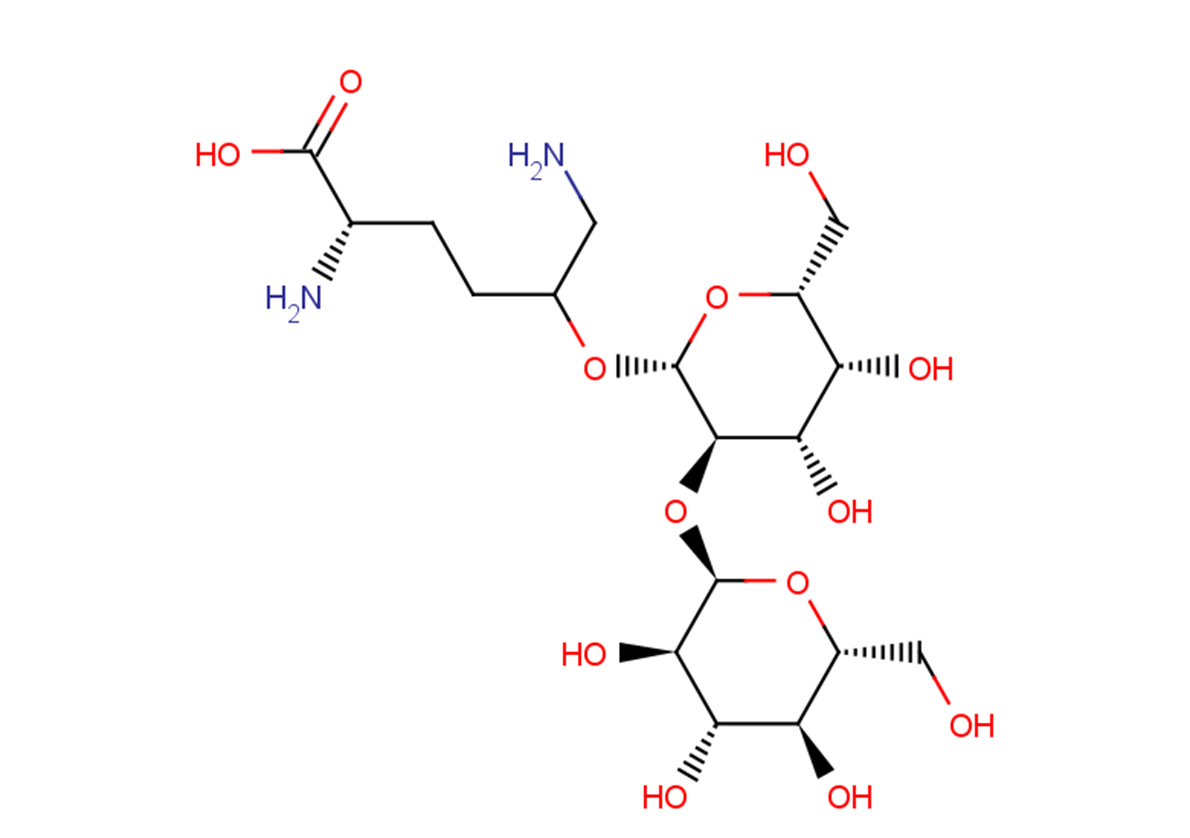Glucosylgalactosylhydroxylysine
| Code | Size | Price |
|---|
| TAR-T31940-100mg | 100mg | Enquire | |||||||||||||||||||||||||||||||||||||||||||||||||||||||||||||||||||||||||||||||||||||||||||||||||
| Special offer! Add £1 to your order to get a TargetMol CCK-8 Kit. Read more here. | |||||||||||||||||||||||||||||||||||||||||||||||||||||||||||||||||||||||||||||||||||||||||||||||||||
Quantity:
| TAR-T31940-50mg | 50mg | Enquire | |||||||||||||||||||||||||||||||||||||||||||||||||||||||||||||||||||||||||||||||||||||||||||||||||
| Special offer! Add £1 to your order to get a TargetMol CCK-8 Kit. Read more here. | |||||||||||||||||||||||||||||||||||||||||||||||||||||||||||||||||||||||||||||||||||||||||||||||||||
Quantity:
| TAR-T31940-5mg | 5mg | Enquire | |||||||||||||||||||||||||||||||||||||||||||||||||||||||||||||||||||||||||||||||||||||||||||||||||
| Special offer! Add £1 to your order to get a TargetMol CCK-8 Kit. Read more here. | |||||||||||||||||||||||||||||||||||||||||||||||||||||||||||||||||||||||||||||||||||||||||||||||||||
Quantity:
Prices exclude any Taxes / VAT
Overview
Regulatory Status: RUO
Shipping:
cool pack
Storage:
-20℃
Images
Documents
Further Information
Bioactivity:
Glucosylgalactosylhydroxylysine is a bone formation and bone resorption marker that is related to bone turnover processes during growth and development as well as metabolic bone diseases.
CAS:
32448-35-4
Formula:
C18H34N2O13
Molecular Weight:
486.471
Purity:
0.98
SMILES:
NCC(CC[C@H](N)C(O)=O)O[C@@H]1O[C@H](CO)[C@H](O)[C@H](O)[C@H]1O[C@H]1O[C@H](CO)[C@@H](O)[C@H](O)[C@H]1O
References
1. Hamazaki H, Hamazaki MH. Catalytic site of human protein-glucosylgalactosylhydroxylysine glucosidase: Three crucial carboxyl residues were determined by cloning and site-directed mutagenesis. Biochem Biophys Res Commun. 2016 Jan 15;469(3):357-62. doi: 10.1016/j.bbrc.2015.12.005. Epub 2015 Dec 9. PubMed PMID: 26682924.
2. Colley KJ, Baenziger JU. Identification of the post-translational modifications of the core-specific lectin. The core-specific lectin contains hydroxyproline, hydroxylysine, and glucosylgalactosylhydroxylysine residues. J Biol Chem. 1987 Jul 25;262(21):10290-5. PubMed PMID: 3611062.
3. Katzman RL, Halford MH, Reinhold VN, Jeanloz RW. Isolation and structure determination of glucosylgalactosylhydroxylysine from sponge and sea anemone collagen. Biochemistry. 1972 Mar 28;11(7):1161-7. PubMed PMID: 4401167.
4. Myllyl? R, Wang C, Heikkinen J, Juffer A, Lampela O, Risteli M, Ruotsalainen H, Salo A, Sipil? L. Expanding the lysyl hydroxylase toolbox: new insights into the localization and activities of lysyl hydroxylase 3 (LH3). J Cell Physiol. 2007 Aug;212(2):323-9. Review. PubMed PMID: 17516569.



